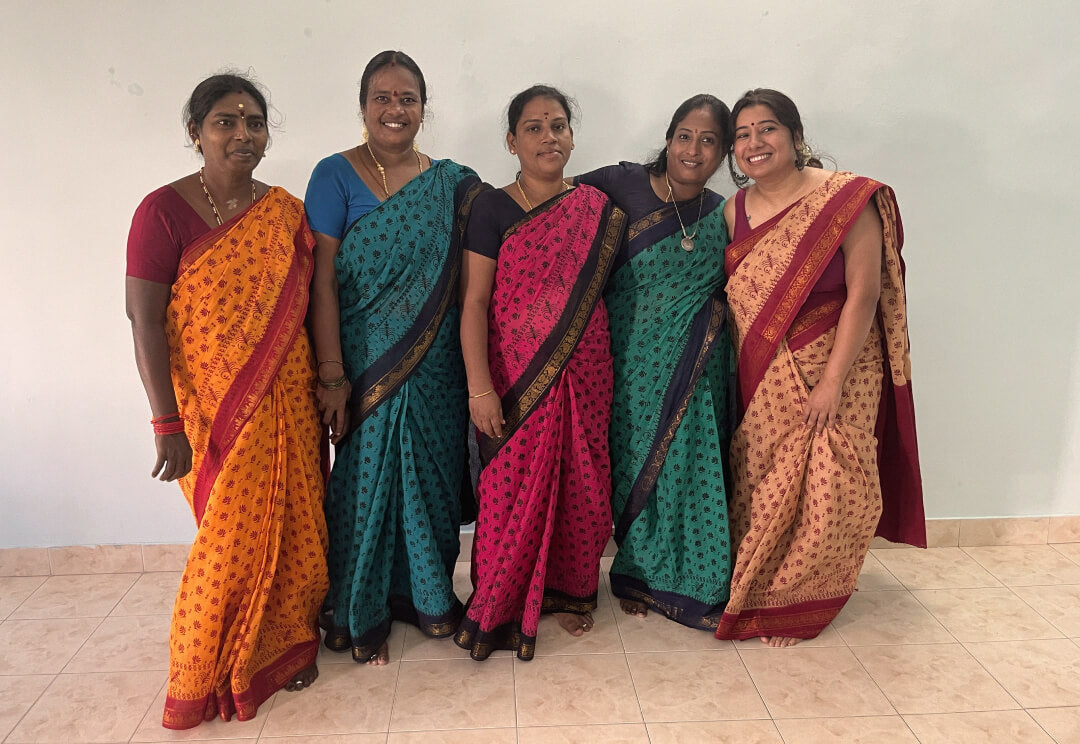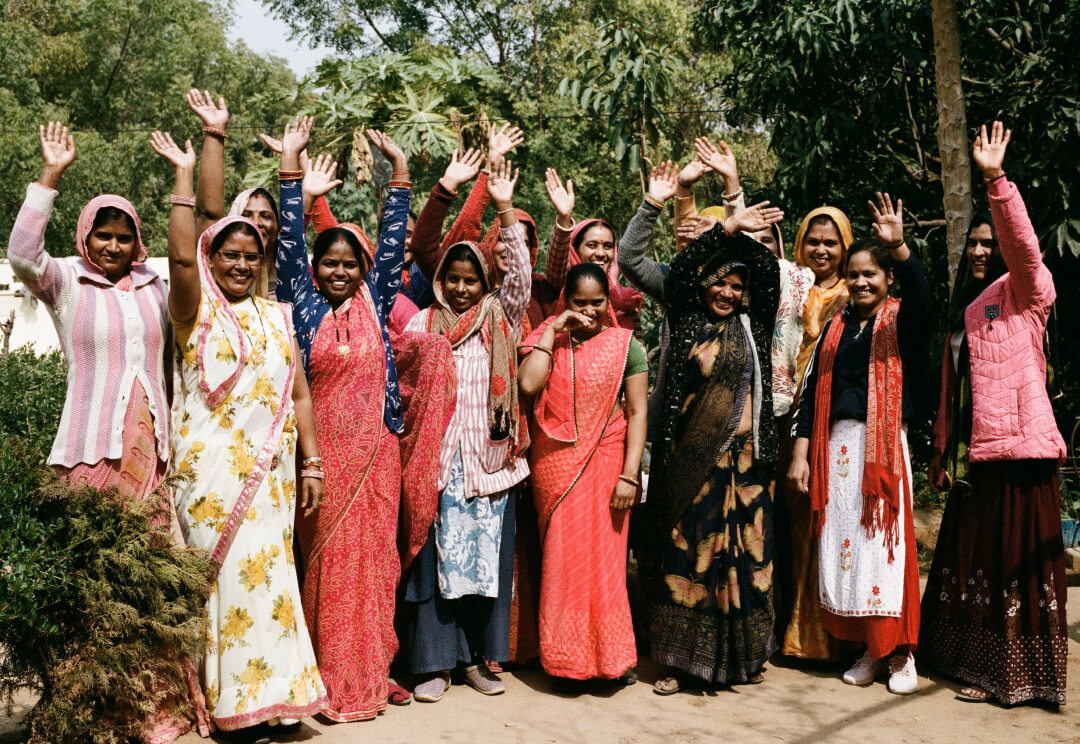The Making of Poet

When our founder fell in love with the art of block printing by hand, it was more than a visually aesthetic experience. It was an experience that triggered a memory, a feeling… that just like the infinite designs being created from heart to hand before her very eyes, everything is connected in a great tapestry of love.
This is one of the many reasons we choose to support some of the oldest and slowest methods of textile production such as block printing fabric by hand, and, as you will find in our new Poet Series styles, handloom woven fabrics. These ancient forms of garment artistry are a beautiful expression of creative energy. Something we feel deserves to be cherished!

The fabrics used to craft our Poet Series have been ethically and sustainably handmade using the generation-passed tradition of handloom weaving in the small village of Manamedu, India. Handloom weaving is an ancient technique of creating beautiful textiles using a wooden loom, thread, and highly skilled craftsmanship.
As a slow fashion label, we have always abstained from producing collections and ranges, however it was necessary for our order of fabrics to supply enough work for the entire village of Manamedu to encourage the continuance of this artistry. Hand-looming is Manamedu’s main source of income and with the rise of fast fashion practices their trade faces a lifespan of merely 10-15 years.
The Poet fabrics are exceptionally unique and the only of their kind in the entire world. Below, we explore a glimpse into the slow, step-by-step process of creating these rare and exquisite weaves.

Preparing thread for a traditional handloom is a meticulous process. By selecting high-quality fibres, cleaning and carding them, spinning the thread, and winding it onto a spool, a strong and durable yarn suitable for the handloom is created. Thread preparation is one of the most essential steps to ensure the quality and durability of the final product.

The yarns are stretched out for sizing application and pasted with natural vegetable starch to add strength and lubrication. Once dried, the yarns are aligned and separated to facilitate smooth weaving by being methodically wound around a wooden beam which is then carried to the loom for installation. Aside from the weaving itself, this is possibly the most mesmerising process and clearly requires a lot of skill! This is a crucial step as it determines the pattern and design of the fabric.

Once the loom is set up, which is a complex procedure within itself, the weaver begins to create the fabric. This process is almost impossible to describe! The carefully organised yarns are assembled onto the loom with absolute precision. An exceptionally tight weave is created, ensuring the fabric is even and consistent. Watching the yarns move through the loom to form perfectly patterned fabric is truly a magical experience.

Handloom weaving is a time-honoured tradition that requires phenomenal skill, patience, and generation-passed knowledge. While modern machines have made mass production of textiles easier, there is a certain charm and character to handwoven fabrics that cannot be replicated by machines. By supporting ancient craftsmanship such as hand block printing and handloom weaving, we can help to preserve the traditional livelihoods of communities such as Manamedu, and encourage the continuance of these beautiful methods of textile production for generations to come.
(Words by Ella Josephine Archer)









